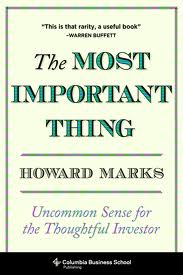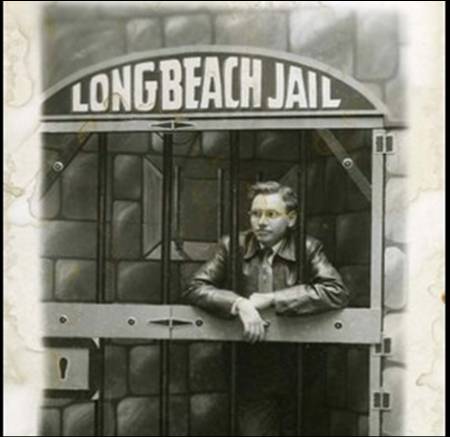This 1991 Barron's interview with Seth Klarman offers some intriguing insights into how Baupost got its start, and the nature of Klarman’s initial client base and business structure. Baupost currently manages ~$32 Billion AUM (per latest firm ADV), whereas ~24 years ago that figure stood at $400mm, and ~33 years ago only $27mm. Time + compounding + inflows can lead to staggering absolute sums. Clients
“My first real education in investing came when I took a summer job in my junior year at college with Max Heine and Mike Price at Mutual Shares. They invited me back to join them in January of '79. I worked there about 20 months until I left for business school. Just before graduation, I was offered the opportunity to join with several individuals who had decided to pool their assets and helped to form the Baupost Group to steward those assets. That was 9 1/2 years ago…These people are all still involved. They were never active day to day…They are wonderful partners…They are on the board of the company. They are partial owners of the company. And each of them has all of his liquid investable assets here, as do all the principals, all the people who run the money.”
“We set out at the beginning to be somewhat unconventional, with our clients acting as board members and as part owners. The incentive really was to do whatever it took to maximize the return on their money, not necessarily to grow a profitable business. Along the way, some decisions were made, including one to turn down most of the people who tried to become clients. We actually closed for new clients about five years ago. And we have grown from compounding ever since…over the years we have grown through word of mouth. In the earlier years, we grew beyond the initial three families, for a couple of reasons. One was that they had some friends who liked the idea of what we were trying to do and wanted to come in. They are the kind of people who say yes to friends. And also partly because we didn't want to be overly dependent on any one person for the success of our business going forward…There were the three families and I had a partner who was a part-time person who focused primarily on administrative matters… The compound return to investors after our profit-sharing arrangement has been 20%-25% in the limited partnerships…over the 8 3/4 years the partnerships have been in existence.”
“They correctly perceived that they could spend a lot of their time clipping coupons, collecting dividends, making sure that all the numbers were right. And it could become, if not a full-time job, at least one that consumed a substantial amount of their time. And these were the kind of people who didn't want to spend all their time just counting their money and paying attention to such details. So they pooled it to form Baupost.”
“We are blessed with a client base that is not short-term-oriented. I don't think any money manager knows how deep the reservoir of client goodwill is.”
Maximizing performance returns and building a profitable investment management business are not necessarily mutually inclusive objectives. The latter often requires quick AUM ramp. This is why seed investor arrangements can lead to potential conflicts.
Klarman and his capital partners first defined the goal and alignment of interest (usually the hardest part). The rest was structuring and execution. Baupost wasn’t conventional or unconventional, simply a solution to their circumstance and situation.
AUM
“Q: How much money do you manage? A: A little bit over $400 million. Q: And how much did you start with 10 years ago? A: $27 million.”
“Q: …Can we take it you stopped accepting new money because you think there is only a certain amount of money you can efficiently manage? A: That is a fair way to put it. There are dis-economies of scale in terms of the returns that can be earned on managed money. That probably kicks in a lot smaller than we are. It probably kicks in at $50 million or $100 million. But over the realm of all possible sizes, you just don't want to get beyond a certain level, particularly when you have an eclectic strategy like ours. There is only so much that you can buy that fits our kind of criteria. And we are comfortable at our current size. Q: So this is pretty much a matter of feel? A: That's right. I think we also want to stay small because it is frankly more fun. We enjoy the camaraderie of being a small firm with everybody doing work, and everybody understanding pretty much where we are going. The last thing I want to be is manager of a staff of a dozen analysts and portfolio managers. I wouldn't like that at all.”
Um, that obviously changed. A friend recently commented that all successful investors must eventually learn to manage larger amounts of capital. Why? Even without large inflows, compounding alone will force you into ever larger realms of AUM.
Mandate
“Q: Is this institutional money you're managing? A: All individual money. Q: It's really unusual to have that much individual money…”
“Q: Do you call yourself a hedge fund? A: No. We do not. We are compensated somewhat like hedge funds but do not hedge in the sense of always being long and short. We tend to be long investors. We are rarely on the short side.”
It’s okay to admit that you’re not a “hedge fund”…
“…perhaps most important, we are not just focusing on equities. We focus on any security of a company that is mispriced. We can even find some companies where one security, like the equity, is overvalued, but where another security, like the debt, might be undervalued. We have flexibility in our partnership agreement to do pretty much anything we like. Right now, and for the better part of the last two years, much of our investment has been in the senior securities of overleveraged companies.”
It puzzles me when people fixate on Baupost’s 13F (the latest discloses $5.9Bn worth of public equity assets). This is only ~18% of the firm’s total AUM. The remaining 82% is invested elsewhere included private real estate & bankruptcy workouts (such as a large position in Lehman).
“If you are asking, ‘Is there more competition in many of the areas that we are looking at?’ that is absolutely true. The good news is that first of all, we are flexible enough to not be committed in any single area. Take, for example, distressed securities. In 1985, as far as we can remember there was only one firm doing research in dis tress. That was R.D. Smith. In 1991, we check our faxes and our research reports, and we count 44 firms doing work in that area…So there is no question that there's now a crowd. The research coverage and Wall Street's attention to it have increased probably more than the considerable proliferation of opportunities in that area. So we have more competition. But we have flexibility, we also have patience. These people have special-purpose funds to do whatever it is they are doing, to do distressed securities, to do LBOs, whatever their funds are looking for. And when opportunities cease to exist, they will probably distribute the funds and go out of business. Already, we see many of the arbitrageurs from the 'Eighties disappear and go into new lines of business like distressed securities.”
Mandate flexibility provides a competitive advantage. Investing is a fiercely competitive. Why make your life harder by limiting where you may seek returns? Klarman may have lots of institutional capital today, but it didn’t start off that way. An institutional capital base may/will constrain the type of investments you can or can’t make.















